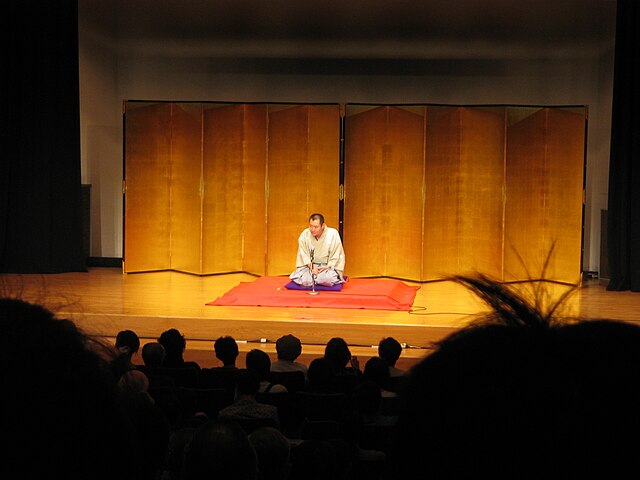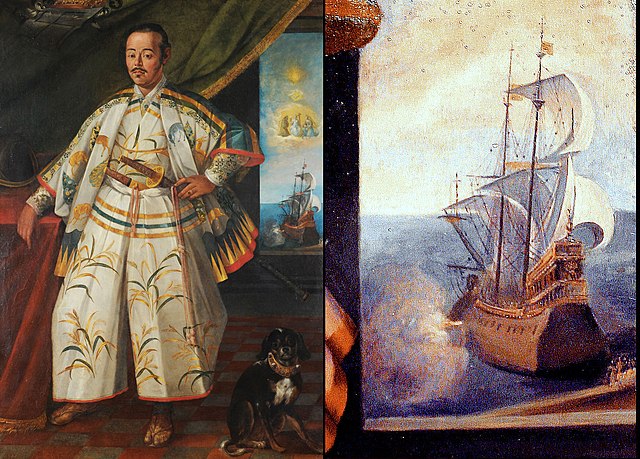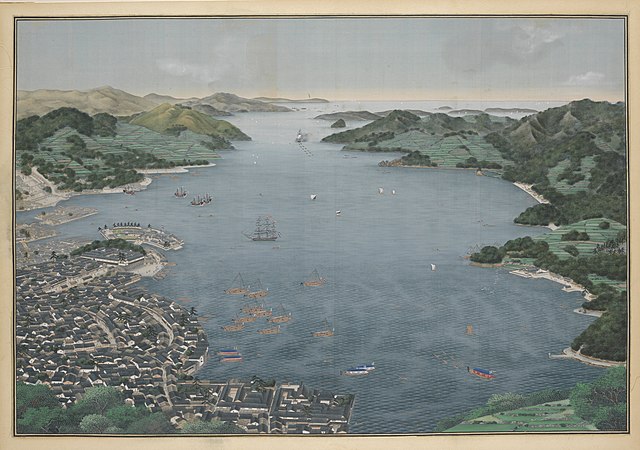Rakugo is a form of Japanese verbal entertainment, traditionally performed in yose theatres. The lone storyteller sits on a raised platform, a kōza (高座). Using only a paper fan and a small cloth as props, and without standing up from the seiza sitting position, the rakugo artist depicts a long and complicated comical story. The story always involves the dialogue of two or more characters. The difference between the characters is depicted only through change in pitch, tone, and a slight turn of the head.
Rakugoka at Sanma Festival
Shinjuku suehirotei is a famous vaudeville theater in Tokyo which hosts rakugo events.
Asakusa Engei Hall is another famous vaudeville theater in Tokyo which hosts rakugo events.
The Edo period , also known as the Tokugawa period , is the period between 1603 and 1868 in the history of Japan, when Japan was under the rule of the Tokugawa shogunate and the country's 300 regional daimyo. Emerging from the chaos of the Sengoku period, the Edo period was characterized by economic growth, strict social order, isolationist foreign policies, a stable population, overall peace, and popular enjoyment of arts and culture, colloquially referred to as Ōedo .
Tokugawa Ieyasu, first shōgun of the Tokugawa shogunate
The San Juan Bautista is represented in Claude Deruet's painting of Hasekura Tsunenaga in Rome in 1617, as a galleon with Hasekura's flag (red manji on orange background) on the top mast.
A bird's-eye view of Nagasaki Bay, with the Dejima foreign trading post island at mid-left (1833)
Itinerary and dates of the travels of Hasekura Tsunenaga. Prior to Panama Canal, caravans carried goods across Central America.







